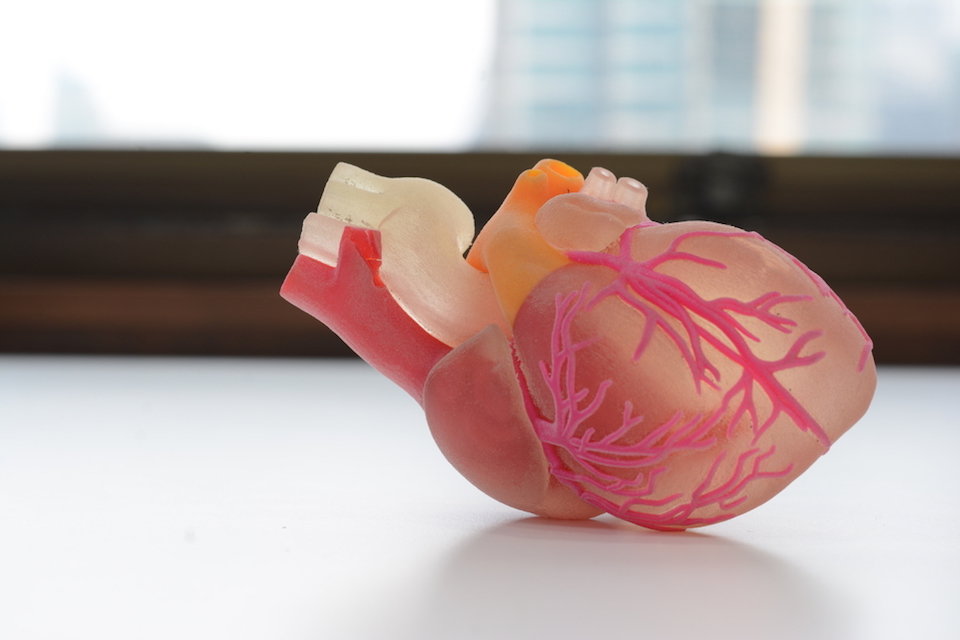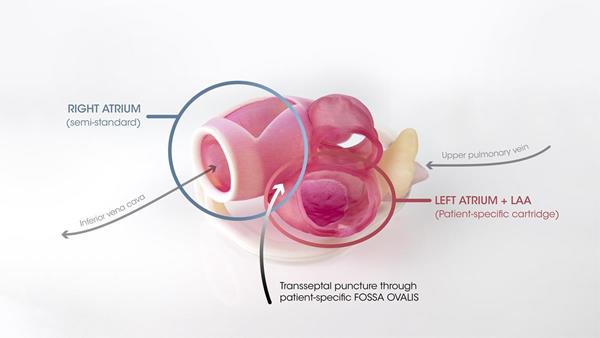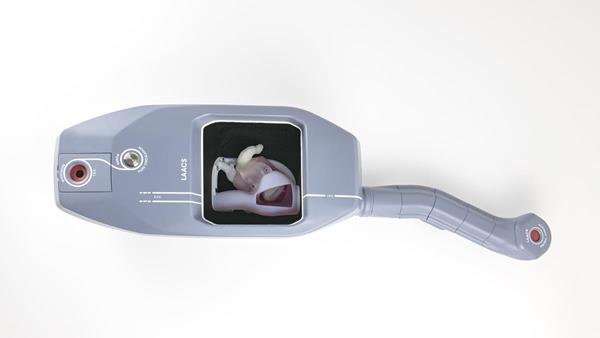Organ twins, 3D prints made from CT scans, 3D printed parts helping doctors train or do complex surgeries is something we hear about all of the time. BIOMODEX is hoping that we’ll see many more of these cases in the years to come. The France and US based firm is trying to make true organ twins for a large selection of medical cases. This could change medical training and have impacts on preoperative planning. They also hope to 3D print these organ replicas in such a way that they feel and interact with the doctor in a realistic way. We interviewed BIOMODEX‘s VP Of Commercialization Carolyn deVasto to find out what their plans are.

What is BIOMODEX?
We are a medical technology company based in Paris and Boston, using 3D printing technology to produce synthetic organ twins from patient-specific images for physician advanced training and patient-specific rehearsal. Our 3D-printed organ twins with haptic feedback similar to that of a patient, paired with our stations offer a unique end to end, clinical training experience.
When and why did you get started with 3D printing?3D printing allows for manufacturing complex shapes, with accuracy, repeatability and short turnaround time. When working in the medical field you need all. There was an unmet need in providing a realistic way for physicians (people of hands) to train on organs that provide haptic feedback similar to that perceived during a real operation, which is extremely important. With FEA modeling and using multi-material printing, which gives us the ability to control down to the micron level in the production process, we have been able to leverage our technology to disrupt clinical practice and experience.
What is INVIVOTECH?
“INVIVOTECH is our patented technology to “functionalize” additive manufacturing. Our proprietary algorithms embed the biomechanics of the organ and surrounding tissue, providing realistic haptic feedback.”
How are these parts made?
“Our process is very detailed. First, we receive patient specific data from medical imaging, then we utilize a number of software programs for CAD, segmentation, FEA modeling and INVIVOTECH implementation… next we 3D print. After printing we have a very detailed post processing methodology to ensure the quality and integrity of each print.”
Who uses them?
Today we work with Medical Device companies globally. They can train physicians on how to use their products and do patient specific procedure rehearsal’s. We recently opened our US Headquarters in Quincy, MA to better serve the US and increase our printing capacity as we are projecting over 2000 organs to be printed globally in 2019. In the future, our vision is to work directly with hospitals and physician to improve the pre-operative planning practice.
What is the advantage of using them?
A huge differentiator for us is the haptic feedback because of INVIVOTECH, physicians love it. We also provide the most clinically relevant experience, allowing physicians to use our solution in the lab under fluoroscopy and in some cases using TEE (trans esophageal echocardiography) or ICE (Intra Cardiac echography). The industry loves it because it is compact, portable and easy to use.
What types of parts do you have?

Today we focus on Hemorrhagic Stroke in the Neurovascular space and Left Atrial Appendage Closure in the Structural Heart space with more to come… BIOMODEX’s technology is a platform that can address any clinical indication where hands on training and preoperative rehearsal is critical.
What is a station?

The station is where the 3D printed organ twin is plugged. Each station is developed to provide blood simulation (same density, viscosity and temperature as blood), and access to the 3d printed region of interest. We have paid special attention to creating a compact, portable and quick to set up and take down solution… so easy my 8 year old can do it!
How do you see the future of your market evolving?
Our future vision is all about improving procedure safety and clinical outcomes by revolutionizing preoperative planning. The patient is our focus, so in the future any time a physician feels it will be beneficial they will be able to use BIOMODEX to test drive a procedure and develop the best strategy for the patient and their specific anatomy.
Why should I choose you to work with?
Today we have revolutionized training, tomorrow we will do the same for preoperative planning. You could choose to work with us because of our innovation, clinical expertise, quick turnaround time, service and clinical specialists in the field but at the end of the day you should choose to work with us because we both agree that it’s all about the patient!
Subscribe to Our Email Newsletter
Stay up-to-date on all the latest news from the 3D printing industry and receive information and offers from third party vendors.
You May Also Like
Profiling a Construction 3D Printing Pioneer: US Army Corps of Engineers’ Megan Kreiger
The world of construction 3D printing is still so new that the true experts can probably be counted on two hands. Among them is Megan Kreiger, Portfolio Manager of Additive...
US Army Corps of Engineers Taps Lincoln Electric & Eaton for Largest 3D Printed US Civil Works Part
The Soo Locks sit on the US-Canadian border, enabling maritime travel between Lake Superior and Lake Huron, from which ships can reach the rest of the Great Lakes. Crafts carrying...
Construction 3D Printing CEO Reflects on Being Female in Construction
Natalie Wadley, CEO of ChangeMaker3D, could hear the words of her daughter sitting next to her resounding in her head. “Mum, MUM, you’ve won!” Wadley had just won the prestigious...
1Print to Commercialize 3D Printed Coastal Resilience Solutions
1Print, a company that specializes in deploying additive construction (AC) for infrastructure projects, has entered an agreement with the University of Miami (UM) to accelerate commercialization of the SEAHIVE shoreline...





























